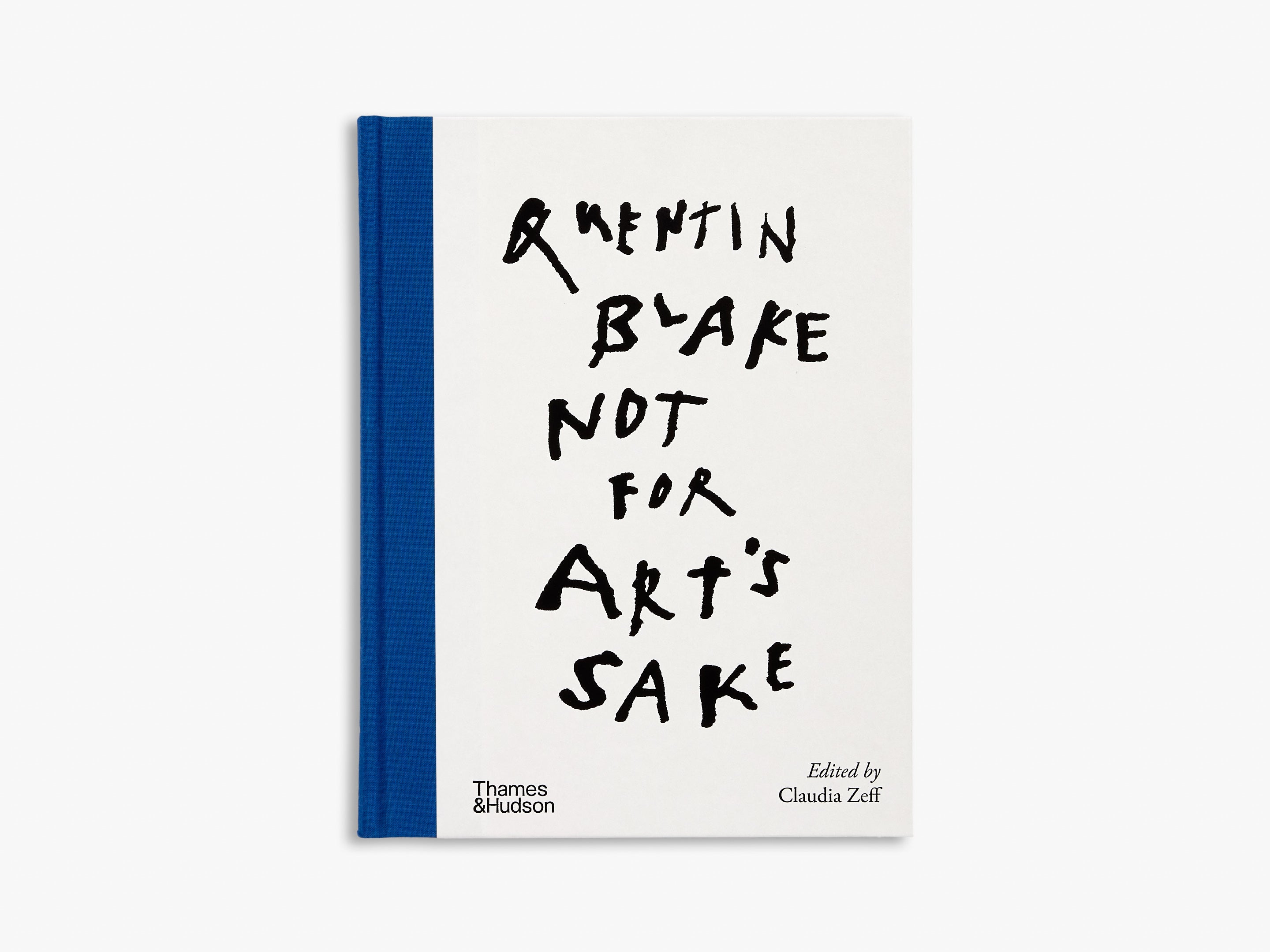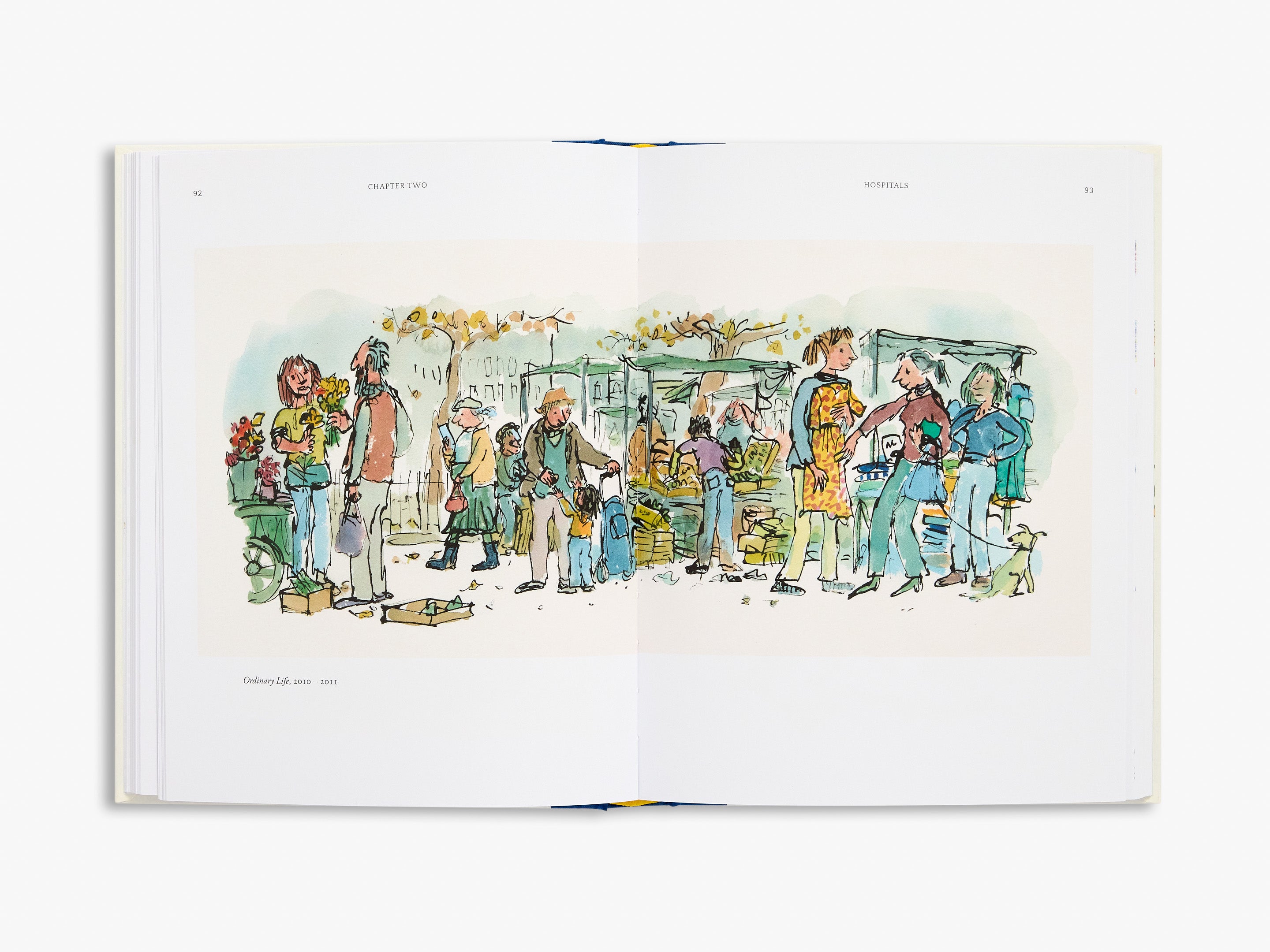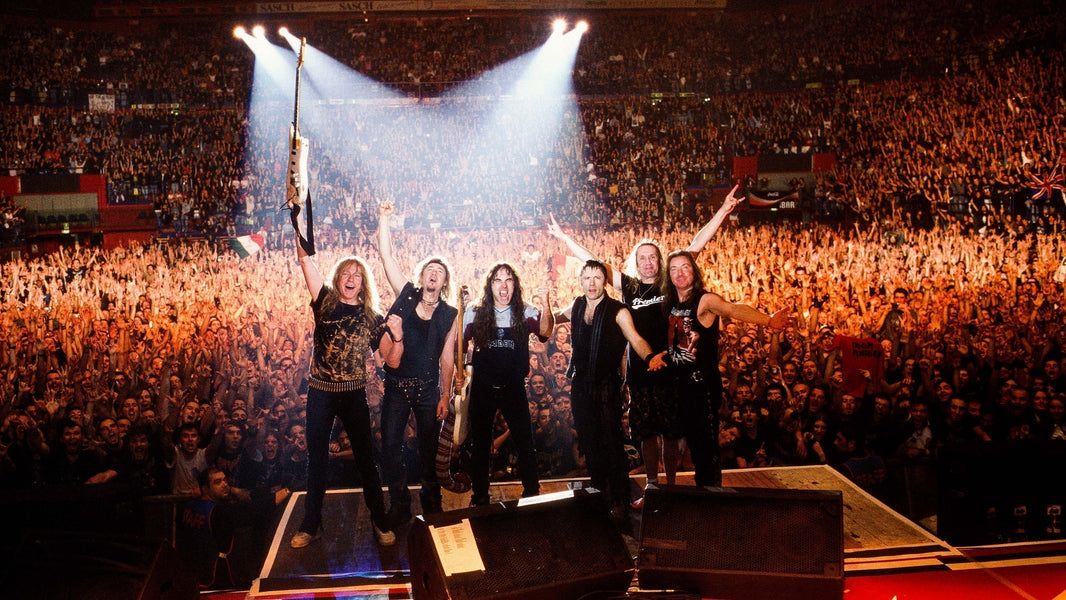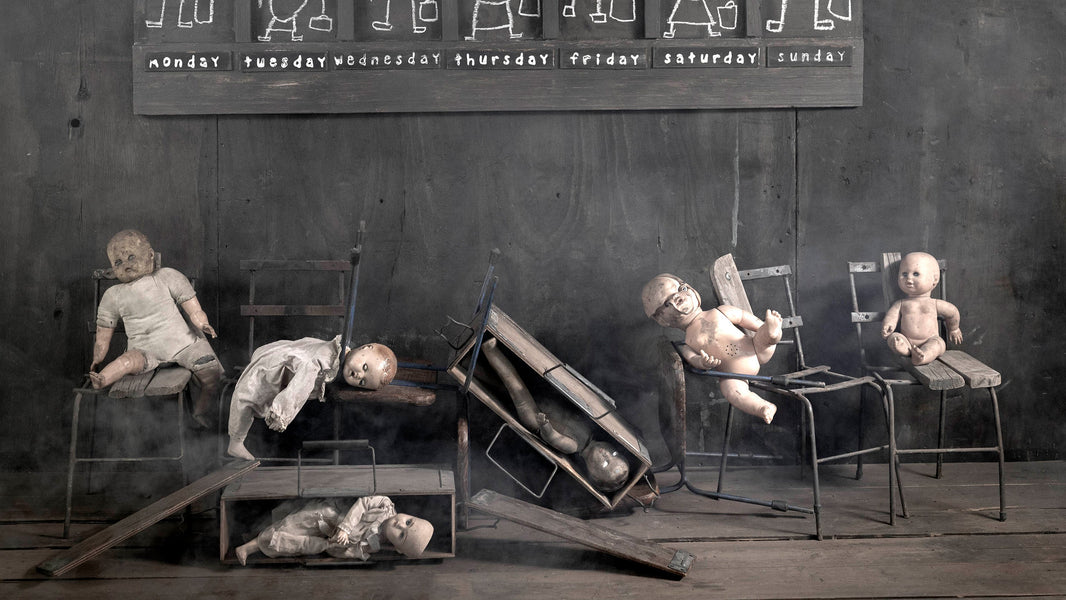Quentin Blake’s illustrations have delighted and inspired generations of readers. As he says, illustration is, ‘if you like, a vernacular; it’s a language that everybody understands. They may look at it and not think that they’re looking at art, but it’s having the effect on them of art. It’s a language that everybody can read, so to speak.’ From his collaborations with writers including Roald Dahl and John Yeoman to his most recent projects, Blake’s body of work is extraordinary.
Not for Art’s Sake presents a new side to Quentin Blake’s illustrative work, focusing on work commissioned for public spaces, charities and beyond. Claudia Zeff – who previously interviewed Blake about Quentin Blake: A Year in Drawing – sits down with the illustrator to chat about Not for Art’s Sake.

'Chums', for Vincent Square Eating Disorders Unit, (c) Quentin Blake, 2010
Claudia Zeff (CZ): What did you enjoy about seeing your work reproduced enlarged and in unlikely places that are ‘beyond the page’?
Quentin Blake (QB): I enjoyed the idea that my drawings would be seen in unexpected places. And I am used to drawing on the paper in front of me, so there’s something rather amazing about it appearing at a size I couldn’t possibly do myself.
CZ: The book mentions that your experience of visiting hospitals has become a great inspiration for your work. Can you tell us a little bit about the people you meet in these places? How did the ideas for your work at the Eating Disorders Centre in London and the Maternity Hospital in Angers, France, come about?
QB: When I was commissioned to do the murals for the hospital in Angers it hadn’t been built yet and the first meeting I had with the staff was in the car park. Visually, I knew what I was going to do – mothers swimming underwater with their babies – that seemed appropriate to the idea of amniotic fluid, to the fact that babies can swim naturally, and even, here in France, to the coincidence that the hospital is on the banks of the River Maine, which has been known to flood from time to time.
I thought the mothers would like to look at the murals during labour and see what they had to look forward to.
In some of the hospital drawings I made use of fantasy, to help people imagine they can do things which they actually can’t at the moment. At the Eating Disorders Unit the situation is the opposite. These patients have enough fantasy about their own selves, so it was appropriate to be realistic and offer pictures of ordinary life in what I hoped would be a reassuring way. I wanted them to feel that they were not strange but perfectly normal like everybody else.

'Salle de reanimation #2', for Angers maternity hospital, (c) Quentin Blake, 2010
CZ: How did the idea for the Big Wrap at St Pancras come about?
QB: The initial idea came from the fact that when Queen Elizabeth was coming to open the new St Pancras International Station there was a derelict building in her line of sight. The designer Lexi Burgess thought we might wrap the two sides that would be visible from where she would be standing.
I was keen to keep the sense that this was a drawing, so it was scratchy in black and only one other colour. It was produced on my drawing board but printed four storeys high. I thought it would be nice to show things that you might typically see when you got to London.
CZ: Can you tell us about your approach to the series of drawings you did for HM Prisons?
QB: I’m very pleased about this project. A friend of mine who was aware of the work I had done in hospitals suggested that prisons might also benefit from such drawings. Fortunately, I knew Dal Babu, a retired Chief Police Superintendent who could guide me. He talked to HM Prisons who said that the visitors’ rooms where families meet the prisoner would be the best place for a series of my drawings. I started looking at family scenes and, more specifically, the relationship between children and their parents. The task immediately became a real pleasure.
I’m delighted to know that they are in the family room of every prison in the country.

Drawing #1 for HM Prison service, (c) Quentin Blake, 2024
CZ: Tell us a little bit about the Quentin Blake Centre of Illustration in Clerkenwell and how auctions have raised funds for the current renovation.
QB: The centre will be the only space in the UK devoted to illustration, so it will have the possibility of constant, and international exhibitions. In fact, illustration doesn’t get so much notice because it isn’t ‘fine art’ and it isn’t in the Tate Gallery and so on, but it is, if you like, a vernacular. It’s a language which everybody understands: they may look at it and not think that they’re looking at art, but it’s having the effect on them of art.
The centre, which will open next year, is on a site in Clerkenwell that belonged to Thames Water. However just to say that doesn’t suggest what a handsome building it is. It’s called the New River Head and includes the base of a 17th century windmill.
What is continually extraordinary to me is, that to my mind at least, it is much more suitable for our purpose than that of the previous owners. I can’t wait for it to open. I’m delighted that there have been successful auctions of my drawings every year for the past four years to raise money for the renovation of the site.
Discover Not for Art’s Sake by Claudia Zeff, with an introduction by Quentin Blake.











